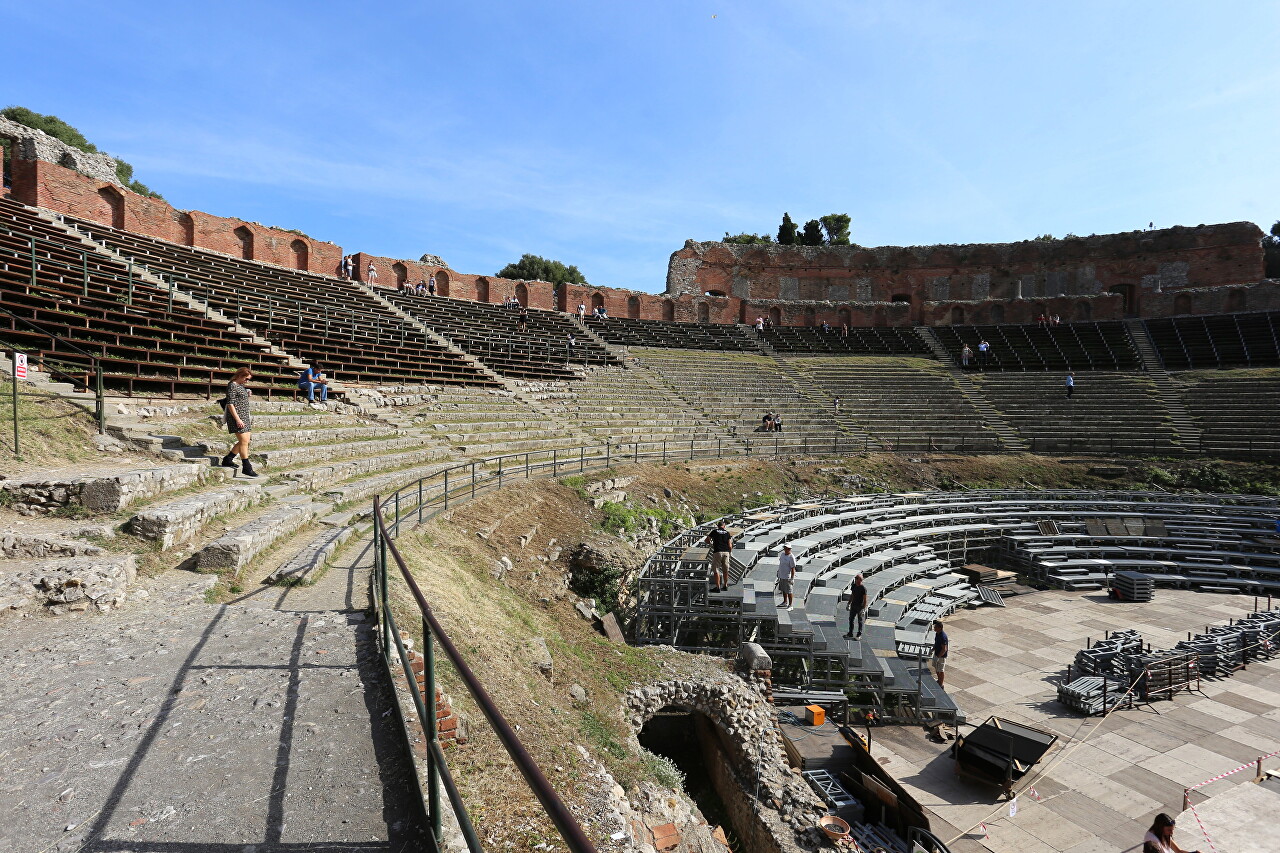Ancient Theatre in Taormina
Via Teatro Greco led me to a huge red brick arch, the main entrance to the most important and largest ancient building of Taormina, a theater built by the Hellenes in the third century BC (Teatro Antico di Taormina). It is difficult to say how this structure originally looked, the current configuration corresponds to the Roman era. From the Greek period, only a section of the wall of stone blocks in the construction of the stage and several seats with Greek inscriptions were discovered, which can now be seen in the theater museum. A place for a theater; it was chosen very well: most of the spectator seats were cut into the rock, and the background of the stage is a stunning view of the Ionian Sea and Mount Etna. The modern word "theater" comes from the Greek word "teatron", and it, in turn, from the verbs "teomai" - "to watch". The Latin word spectaculum has a similar origin, it means "spectacle". The forerunner of the theater in ancient Greece were the festivals of the god Dionysus, during which performances on the theme of religious mythology were arranged. Over time, special structures were built for this purpose, and famous poets were involved in writing plots. In addition to religious teaching, theaters have spread socio-ethical concepts. Attracting a huge number of viewers, theaters have become a school of public morality and culture, accessible to absolutely all segments of society. Theaters are an invariable attribute of Greek cities, some of them could accommodate more than ten thousand spectators. To reduce the cost of construction, the terrain was used, theaters were usually built on hillsides. At the same time, the main elements of the theater structure were formed, which have remained almost unchanged to this day. The Greek theater had a space for the audience, rising in semicircular tiers, in front of it there was a platform where the actors played a performance, as well as a choir that provided sound design. Behind them was a skena - a structure where the actors were preparing for the performance. Over time, decorations began to be placed on the skene. Undoubtedly, the ancient Greeks had an idea about acoustics, modern studies of preserved theaters allow us to conclude that the voices of the actors were heard on the far rows of huge amphitheaters.
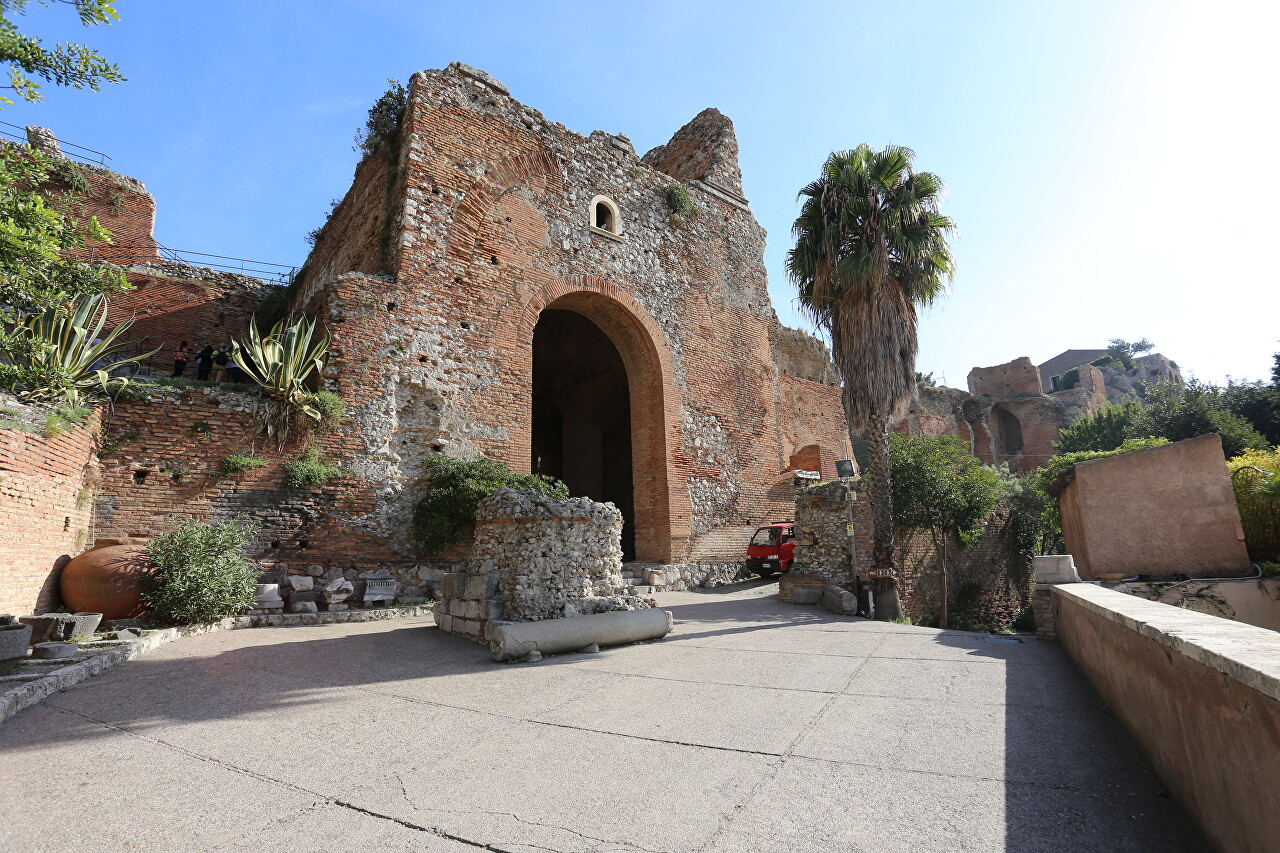
..
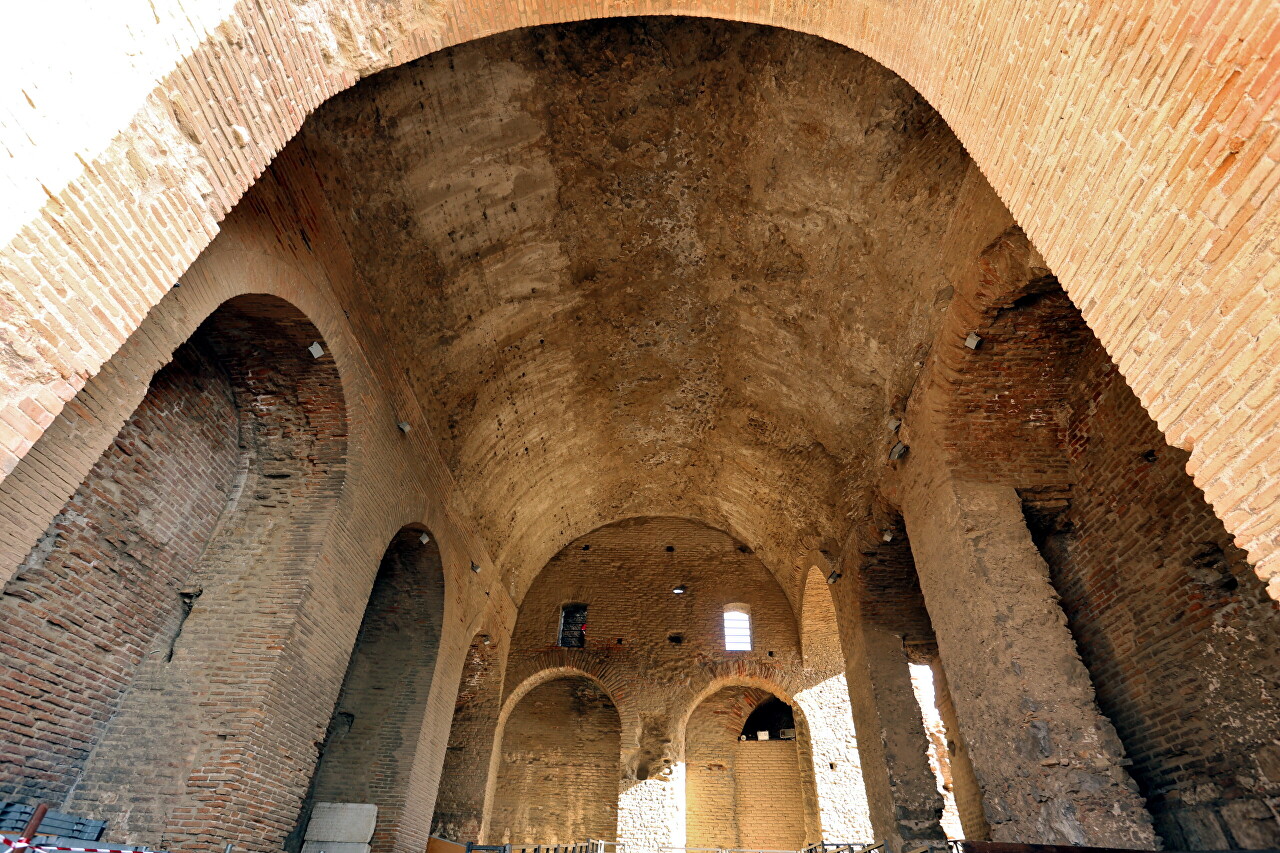
..
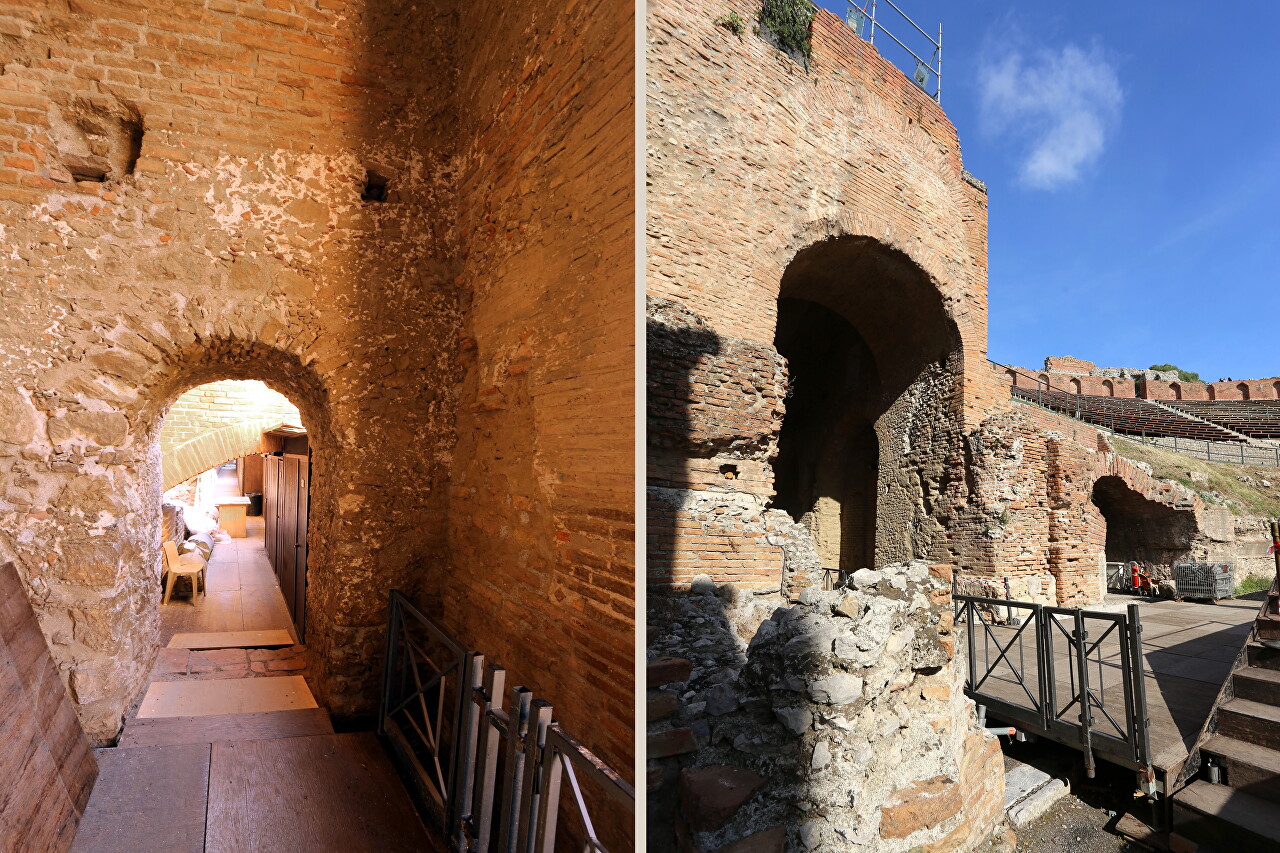
..
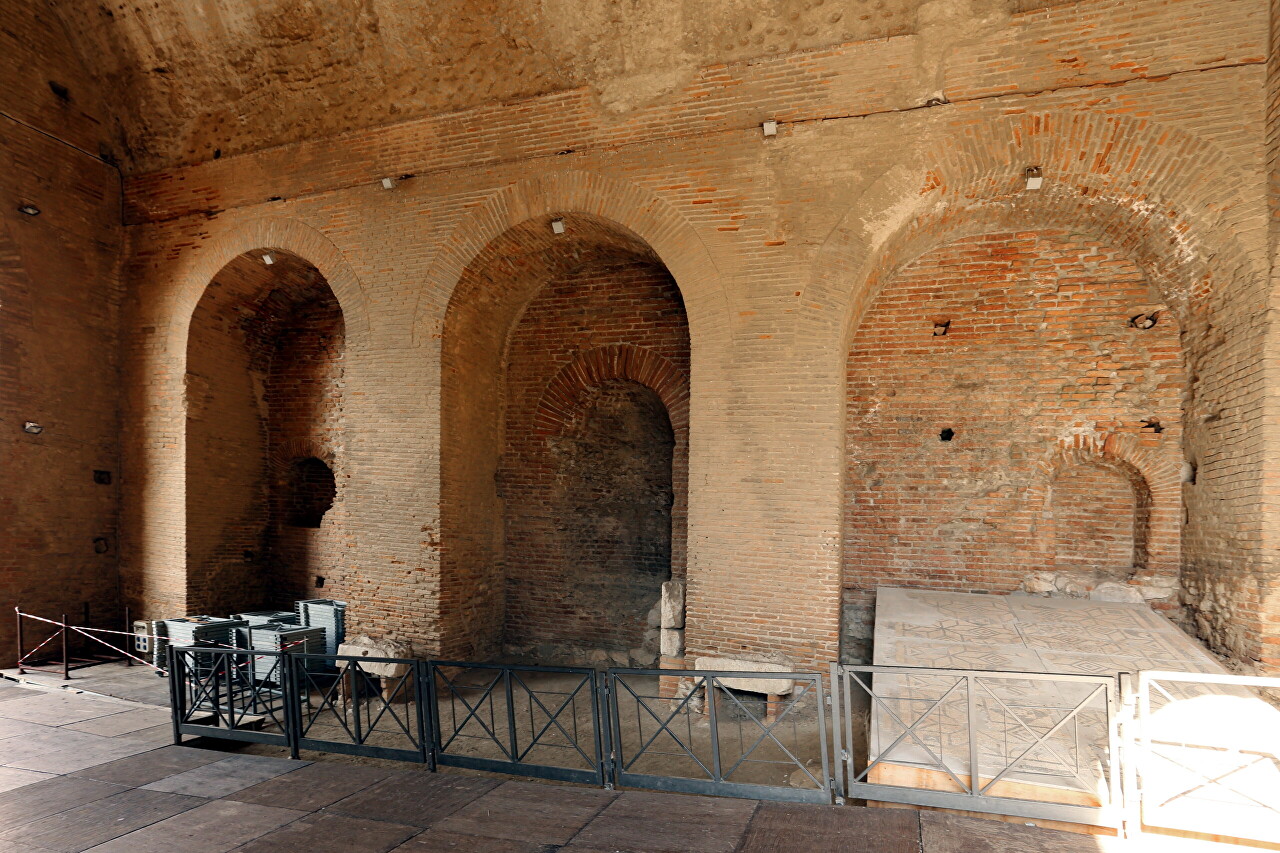
..
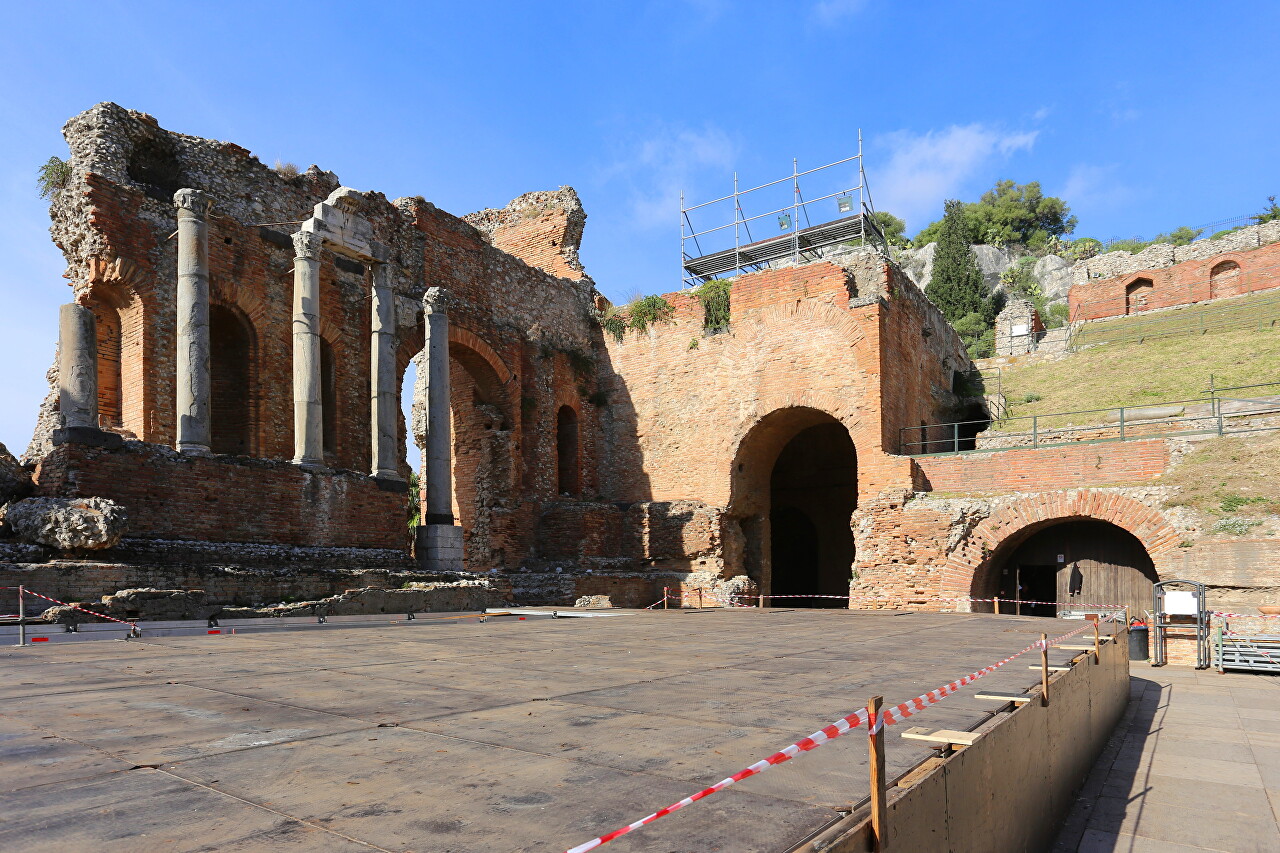
..
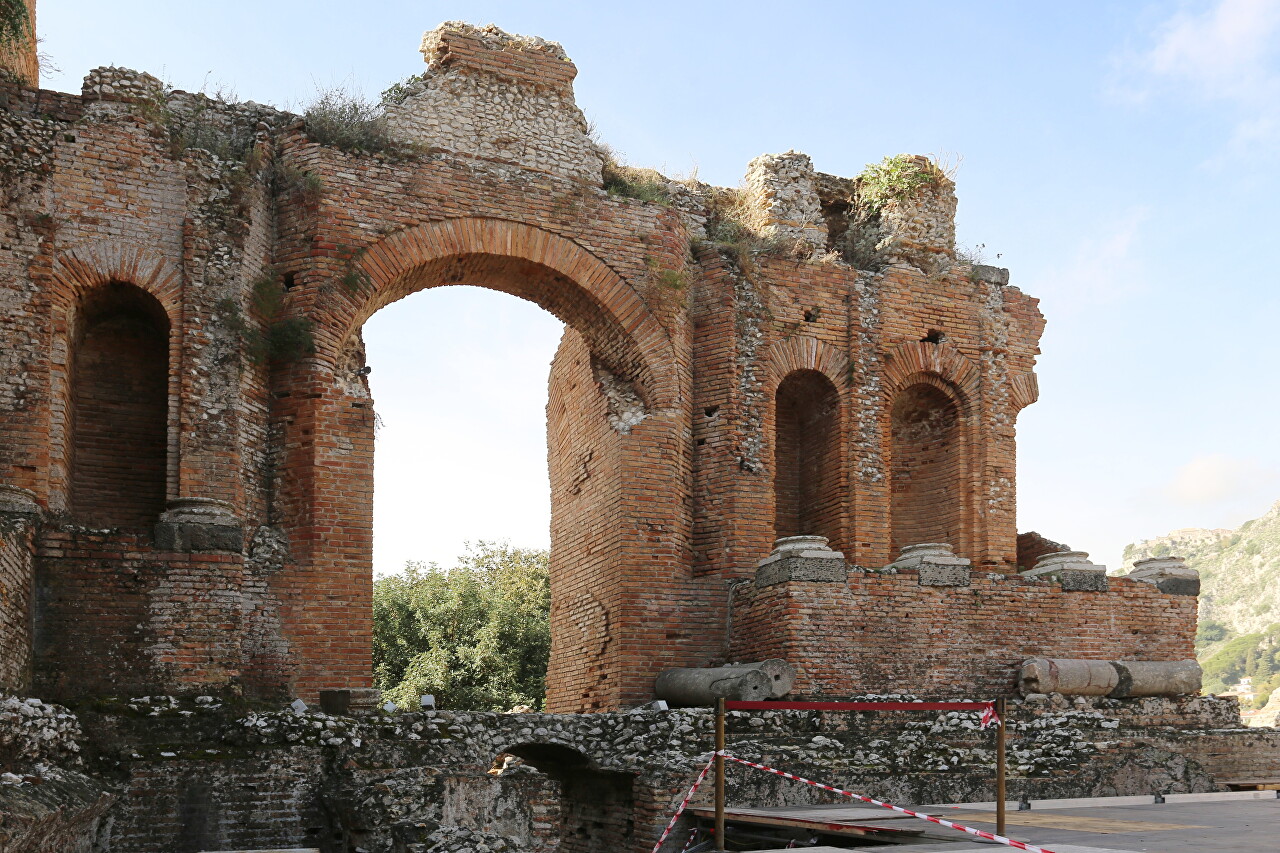
..
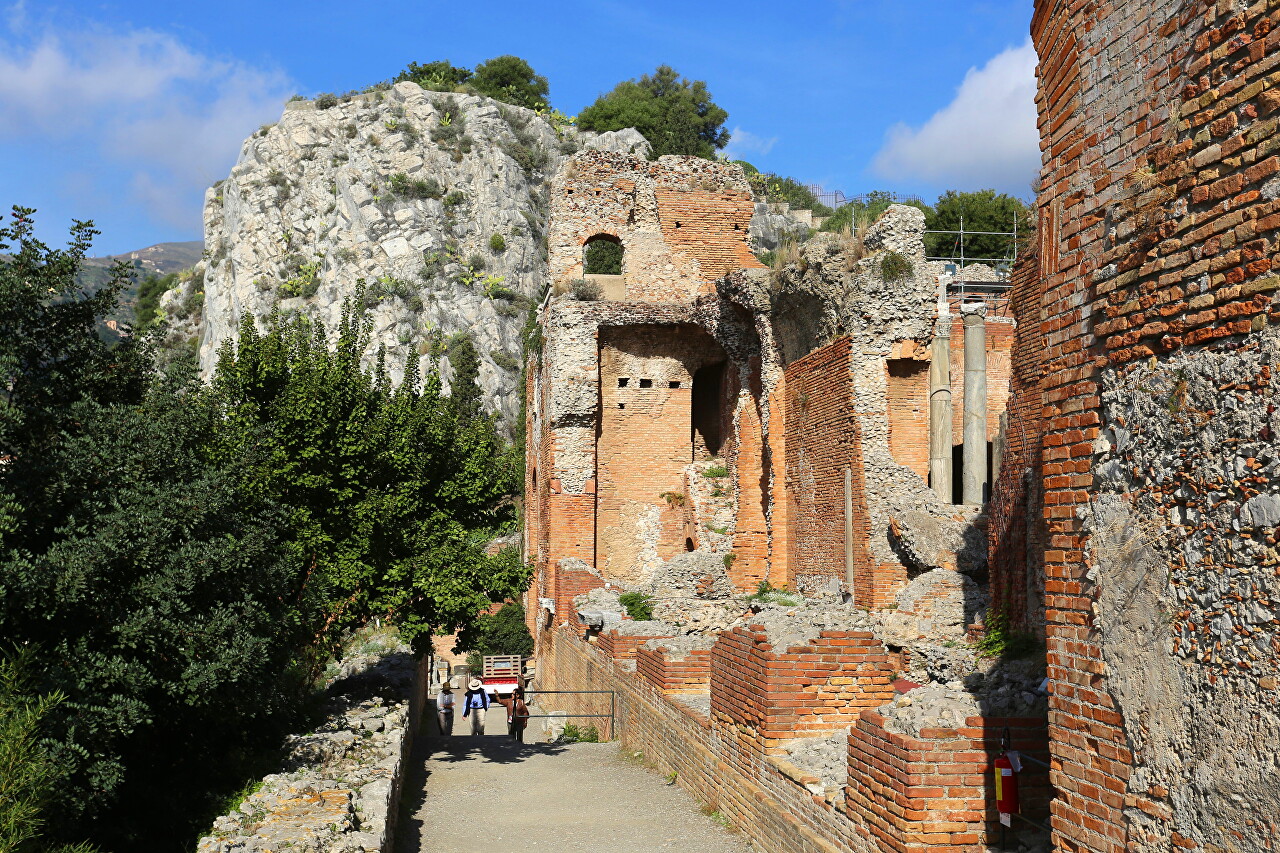
..

..
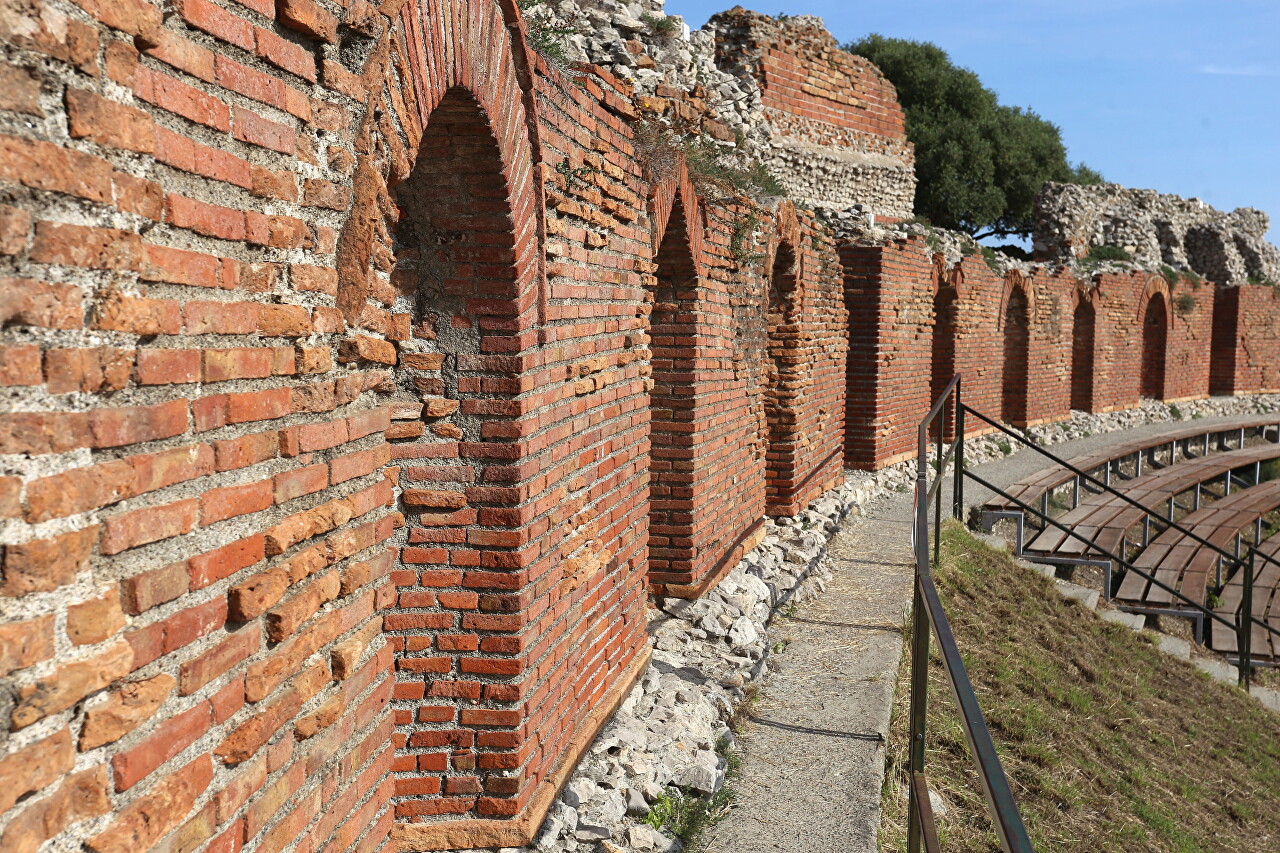
..
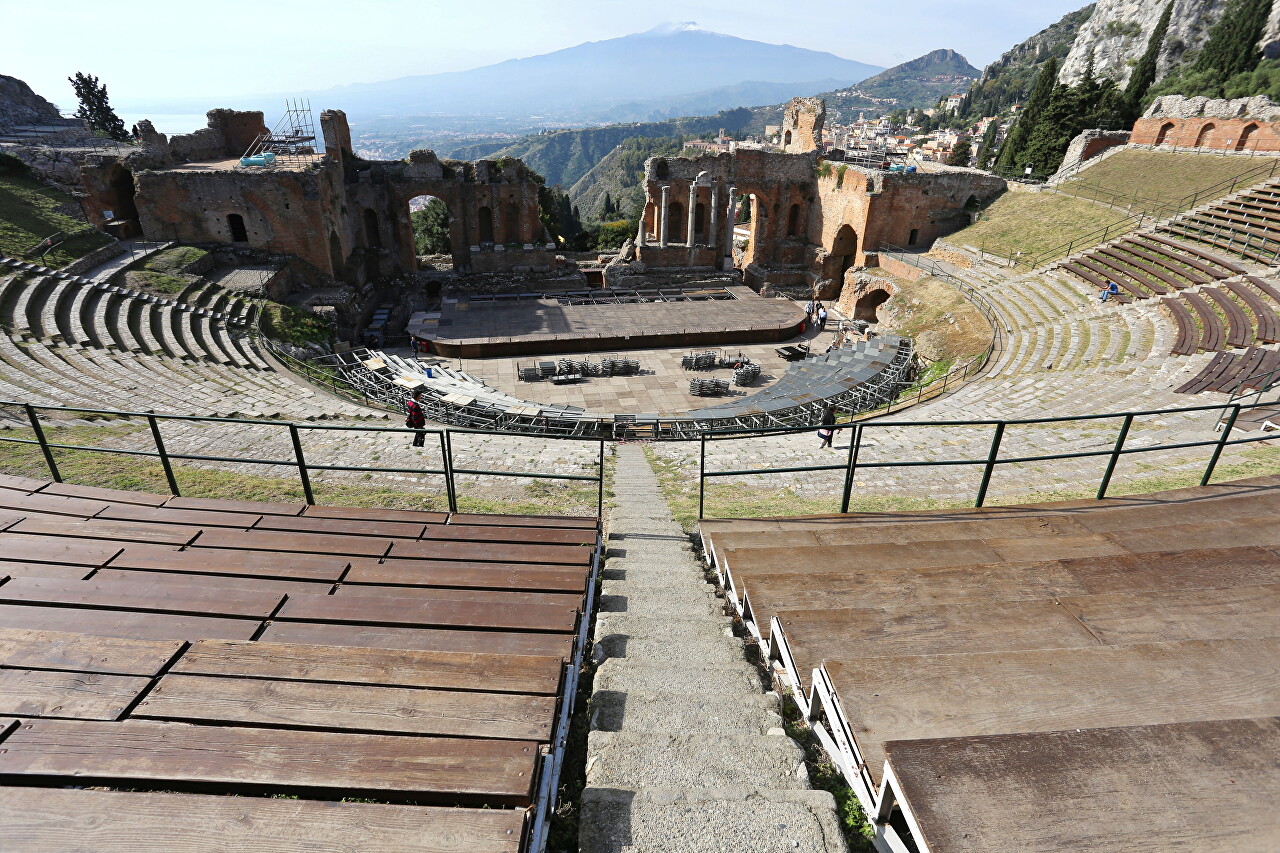
..
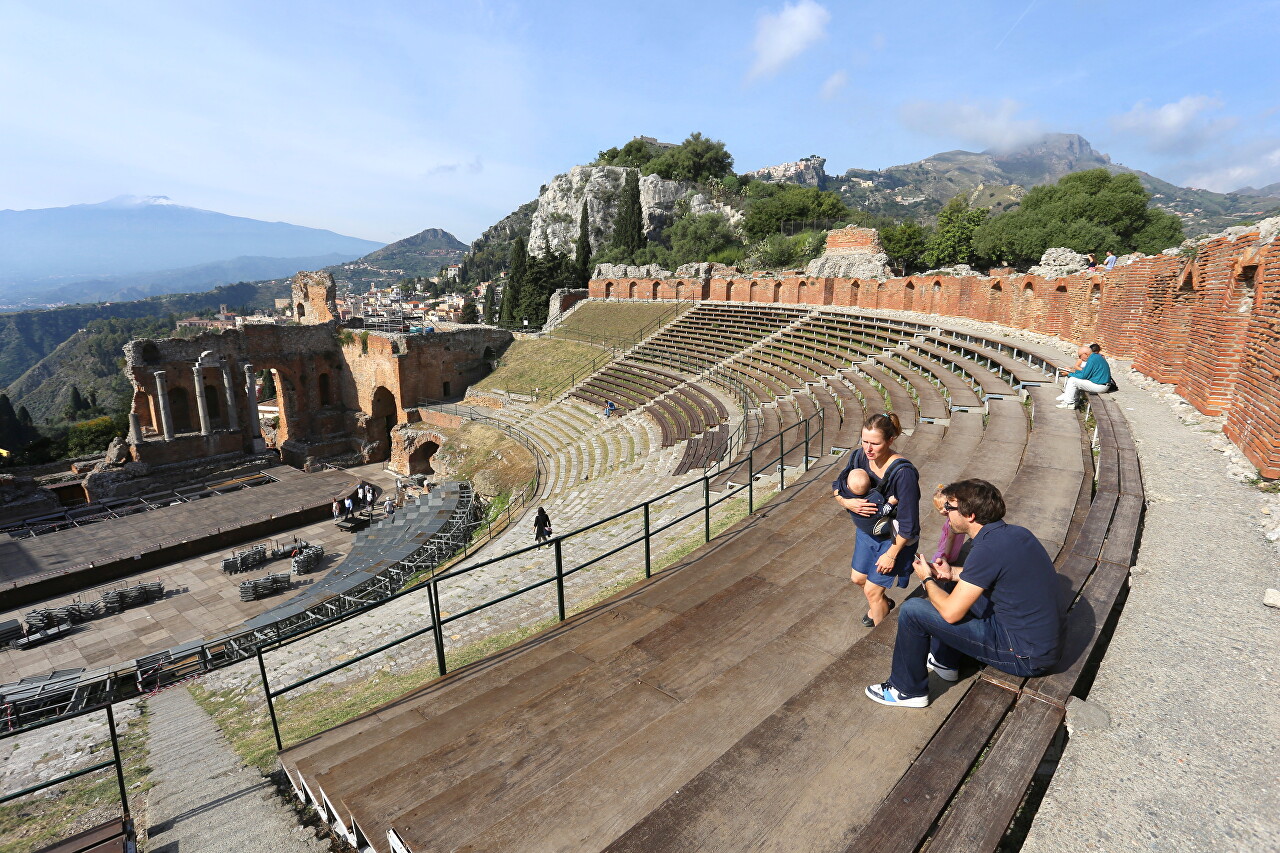
..
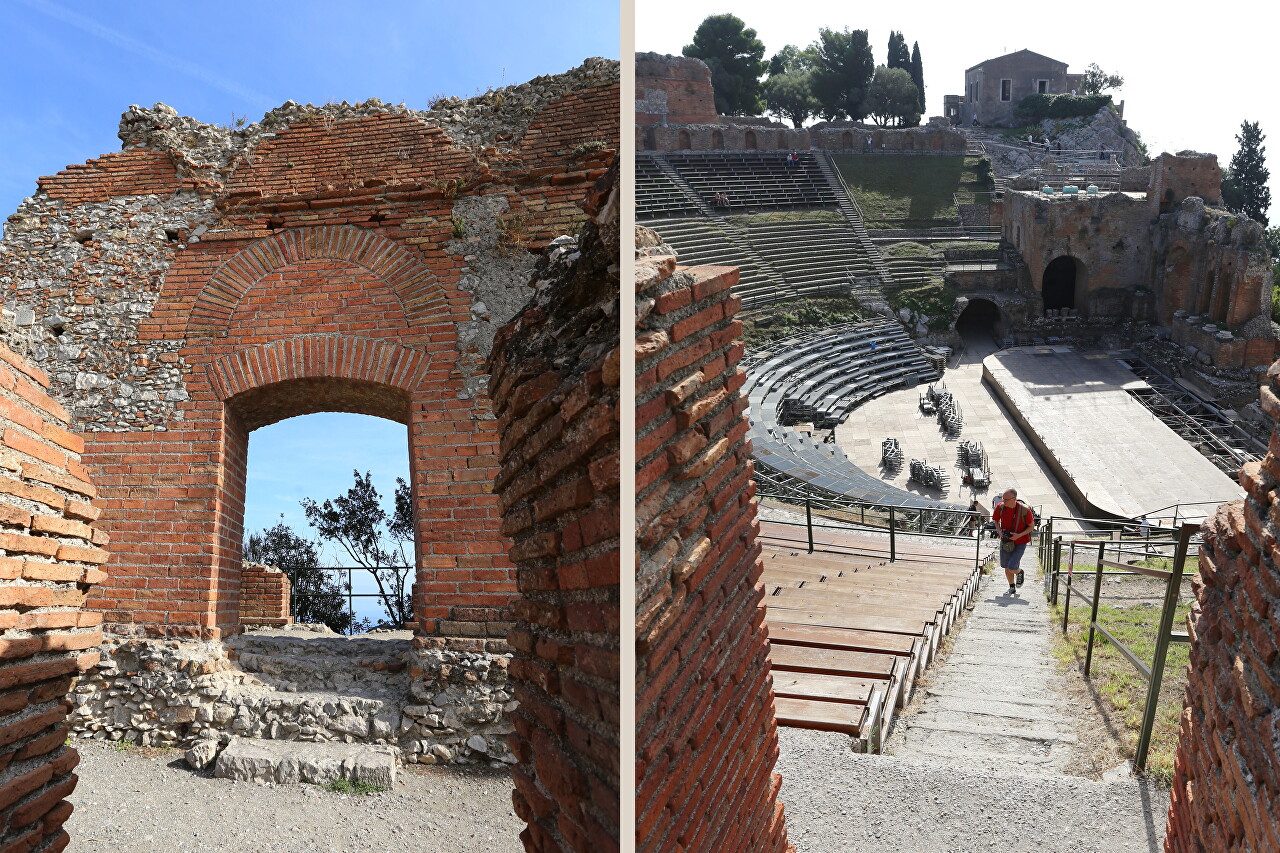
..
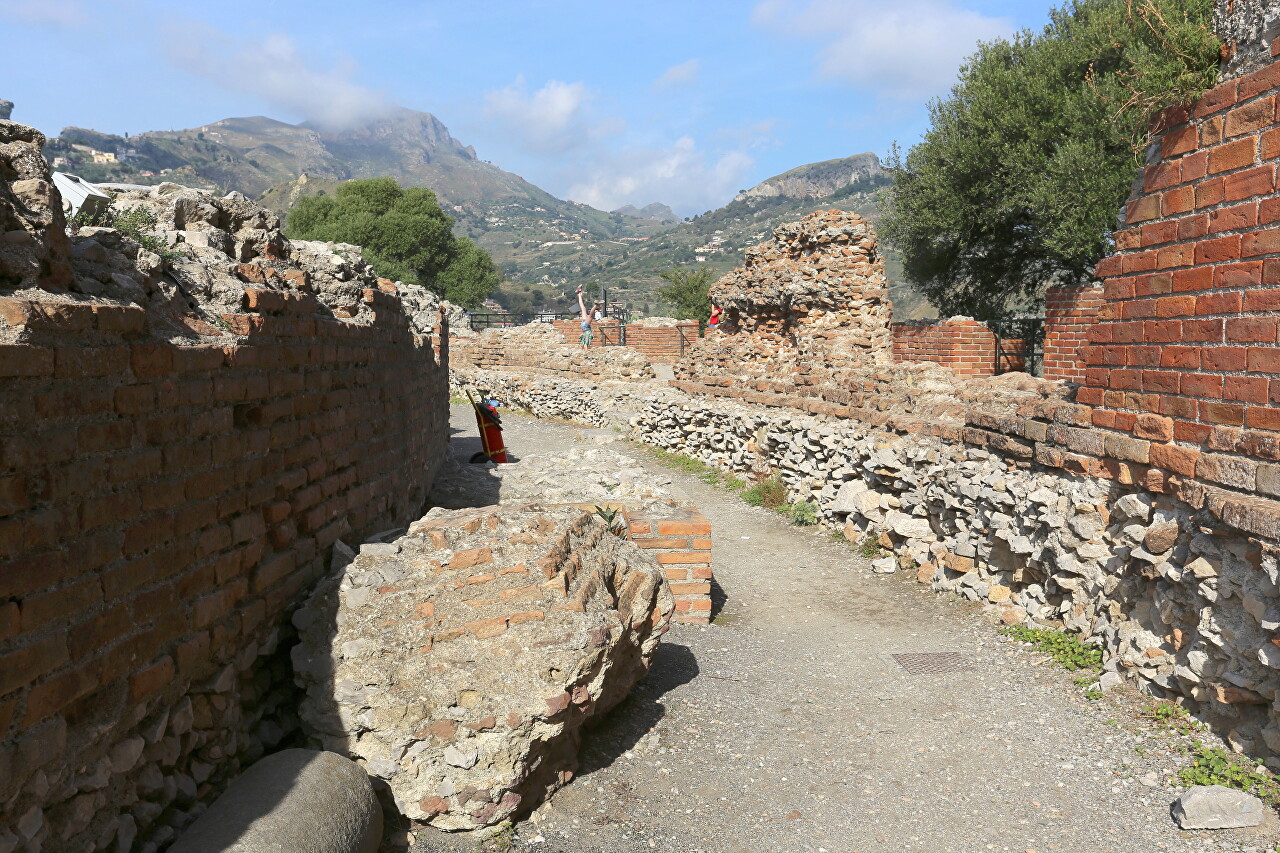
..
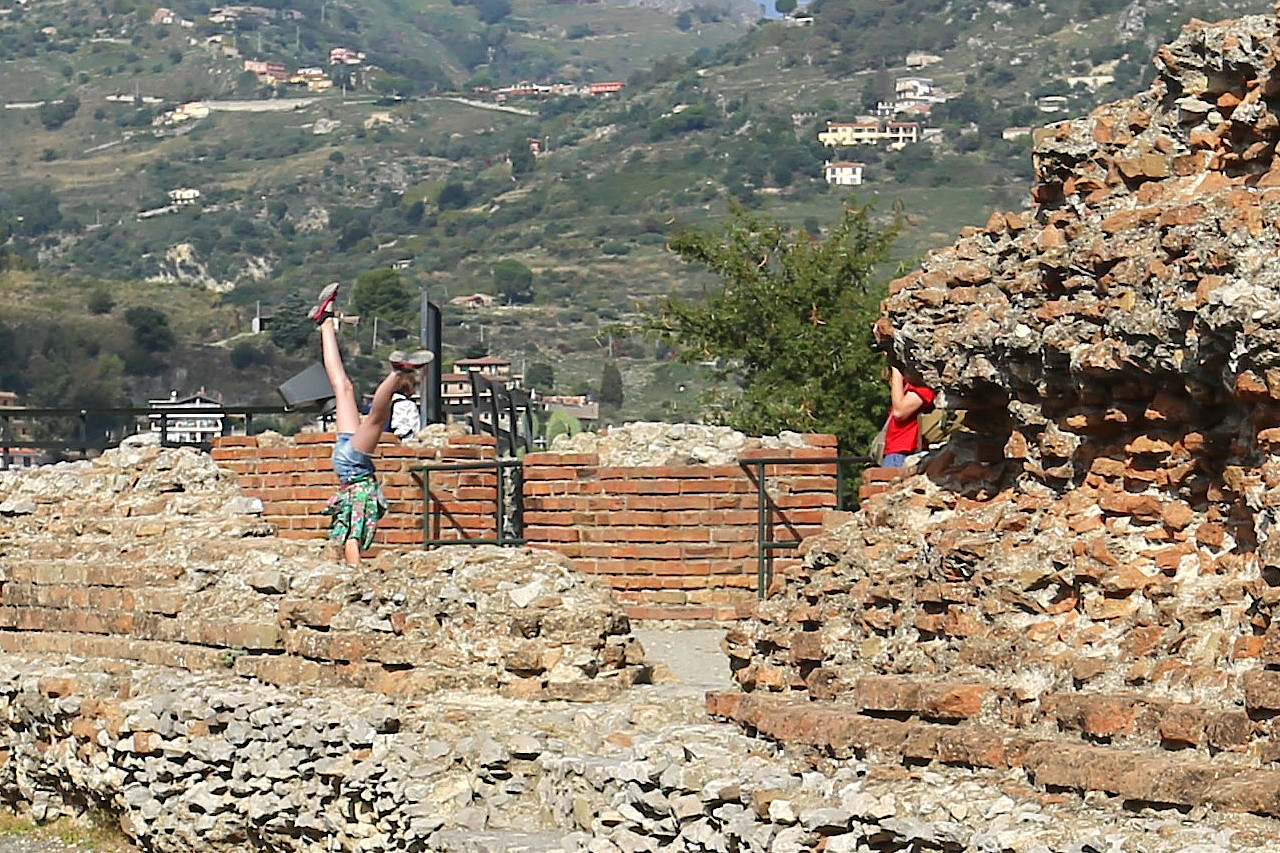
..
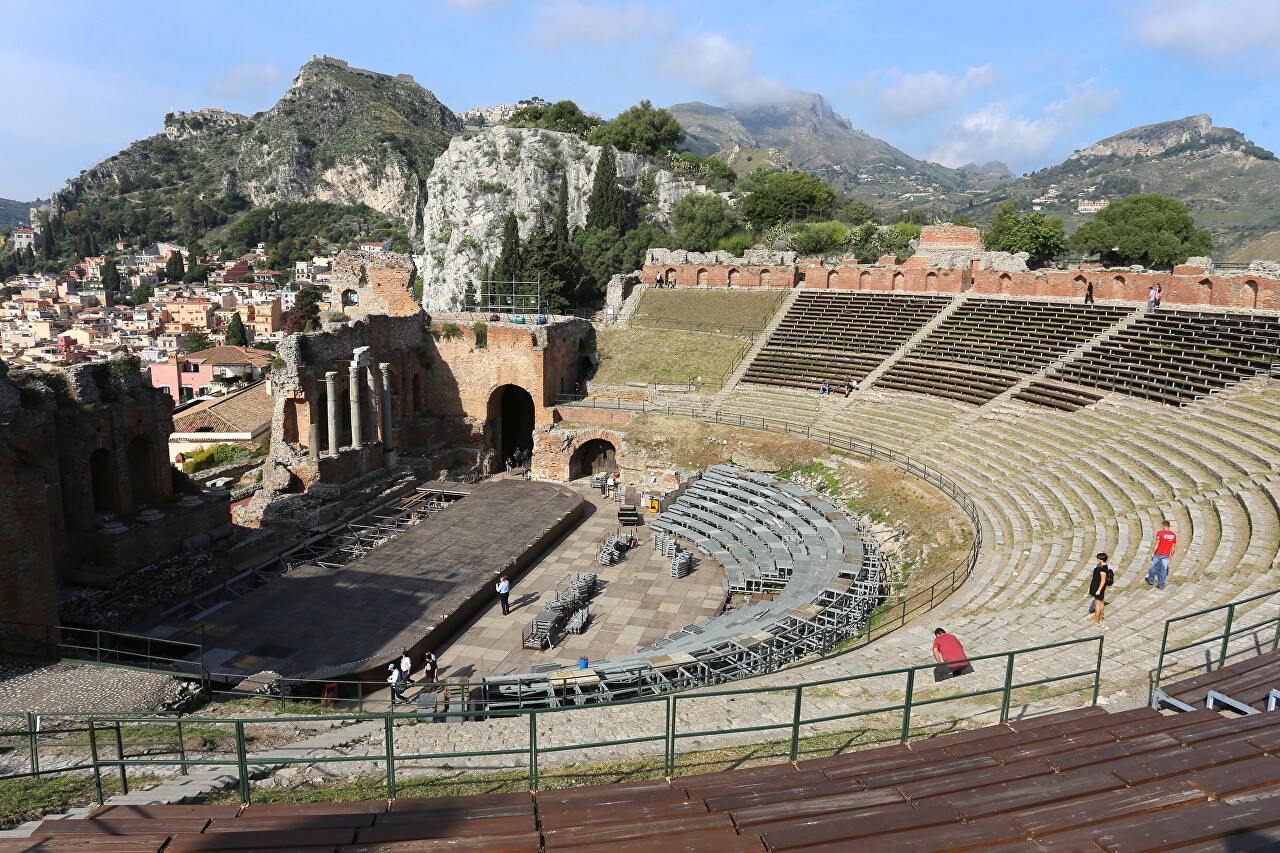
..
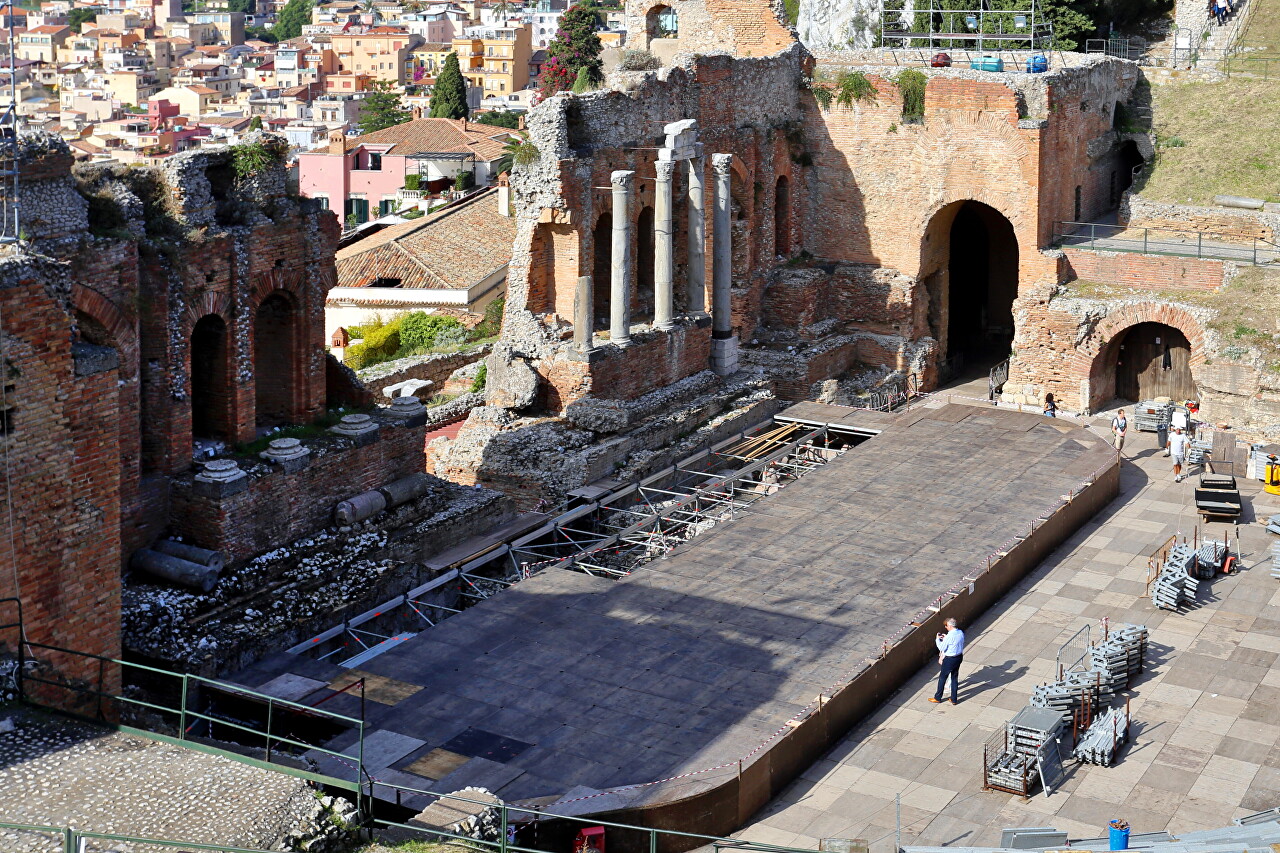
..
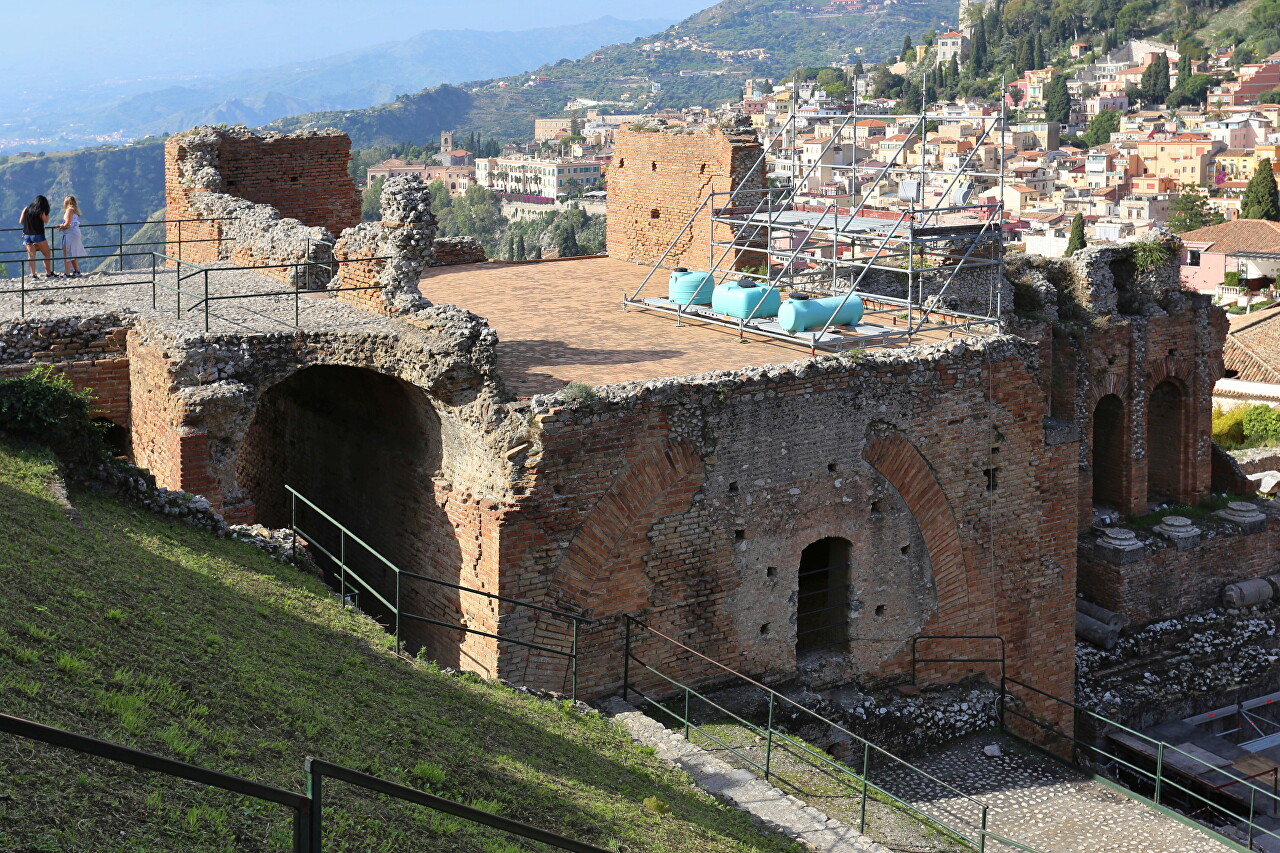
..

..
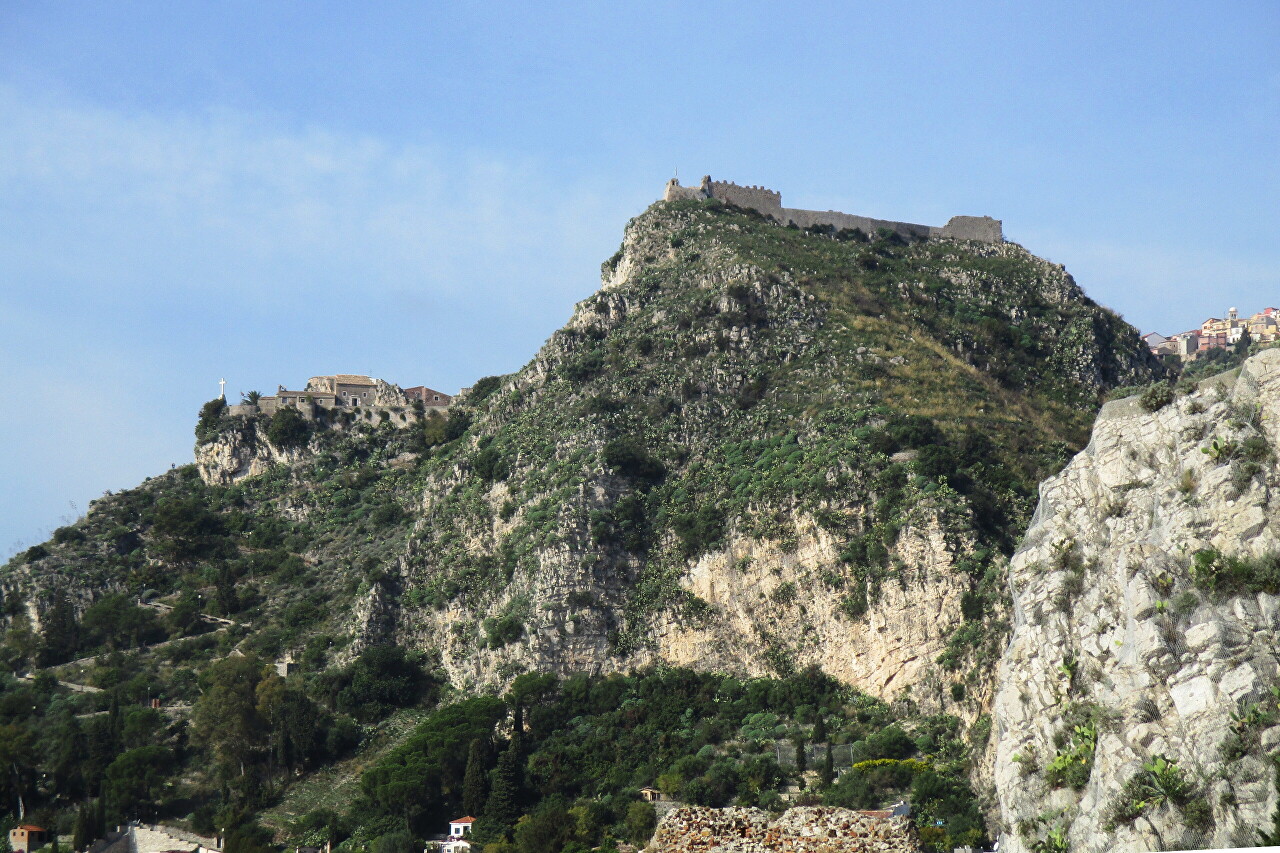
..
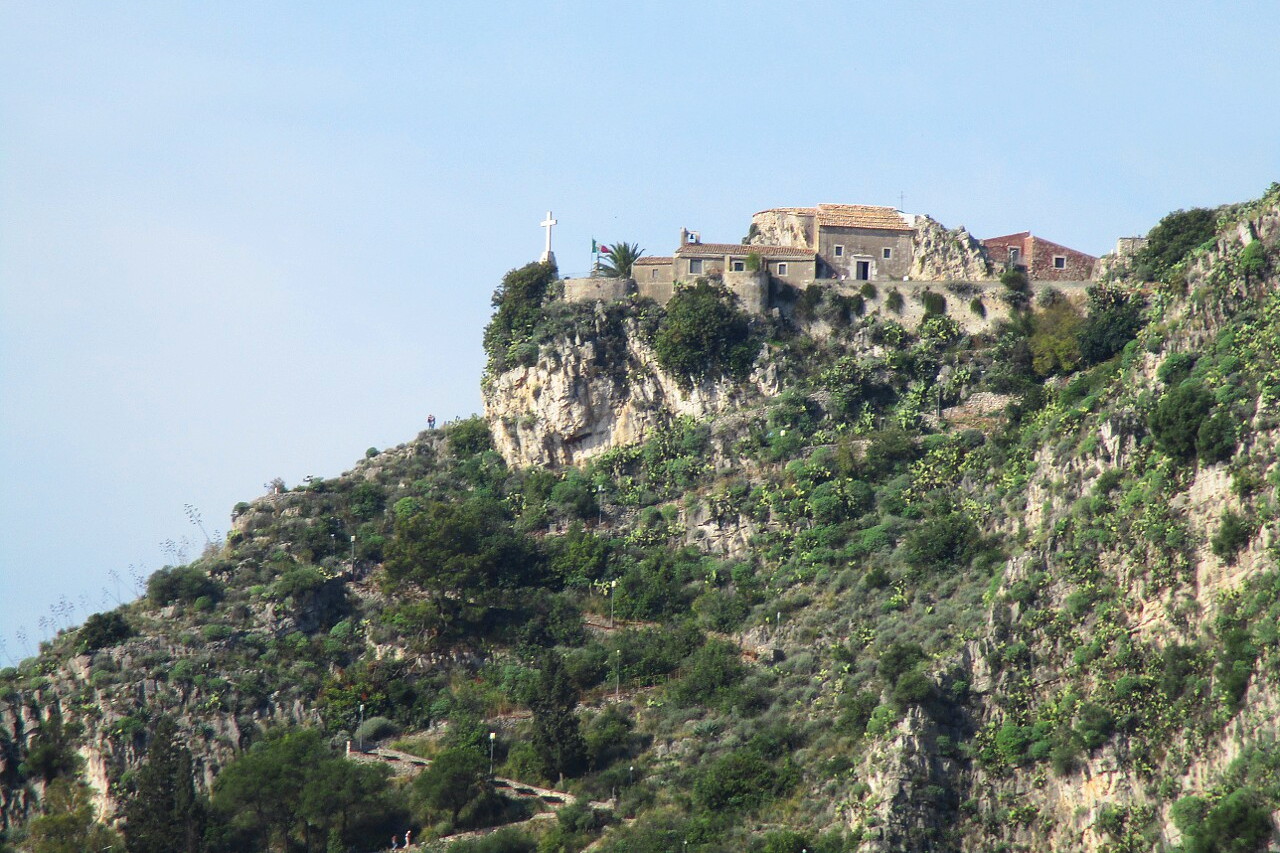
..
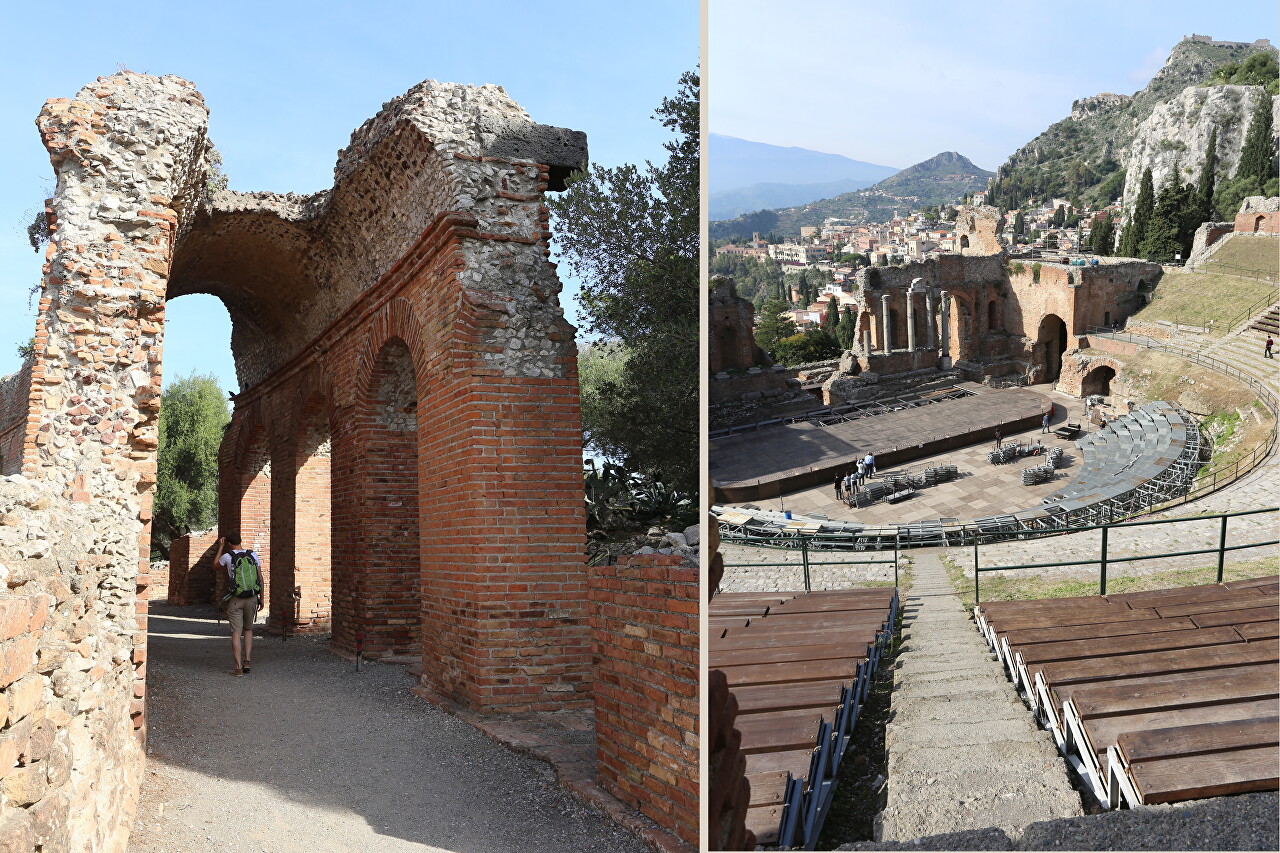
..
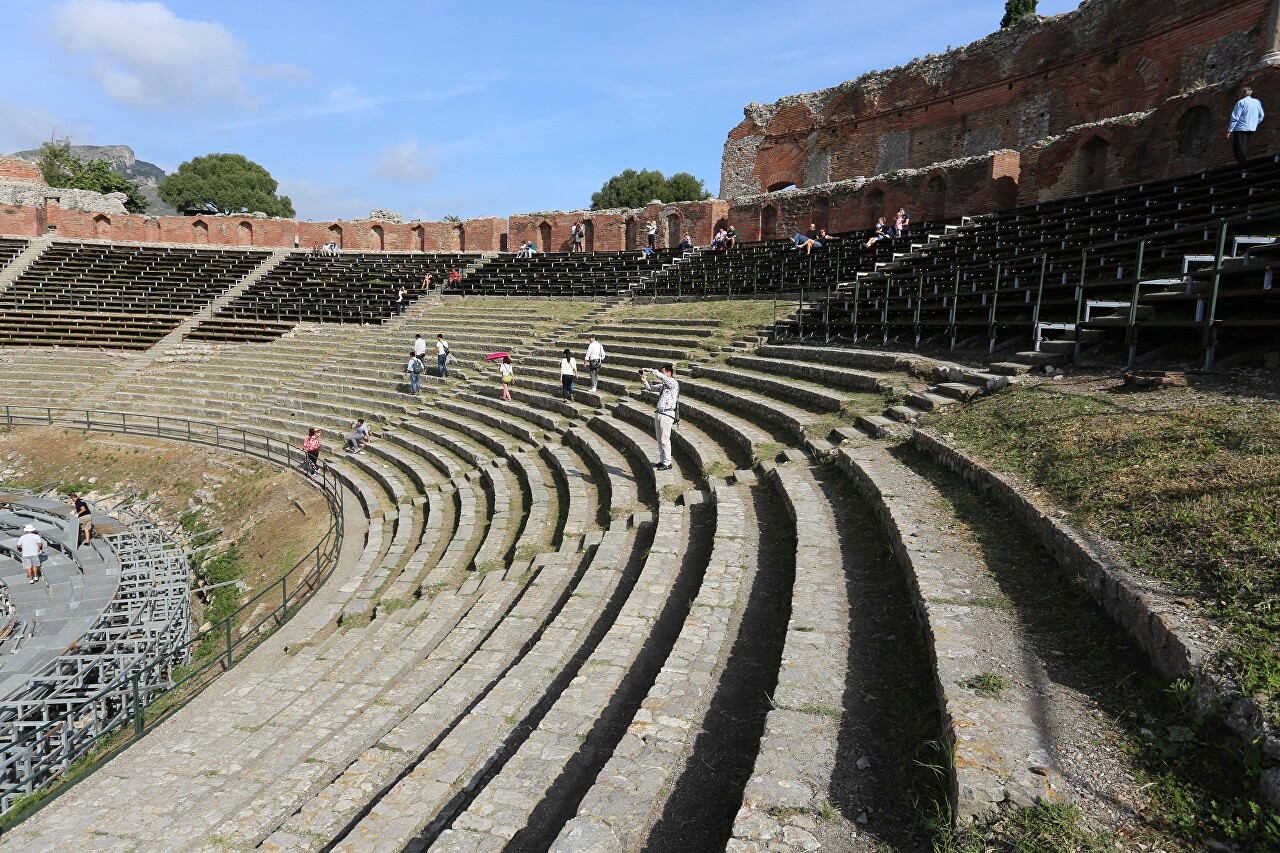
..
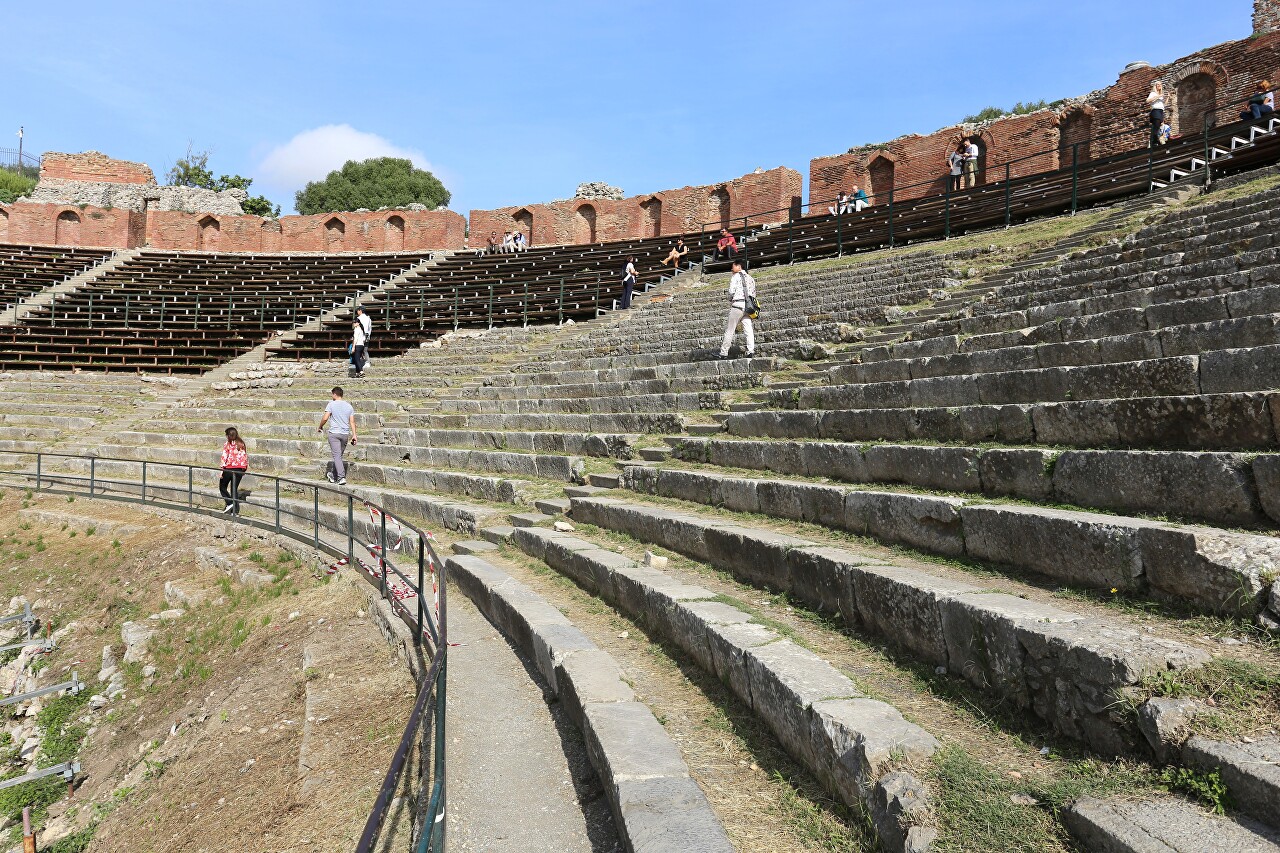
..
